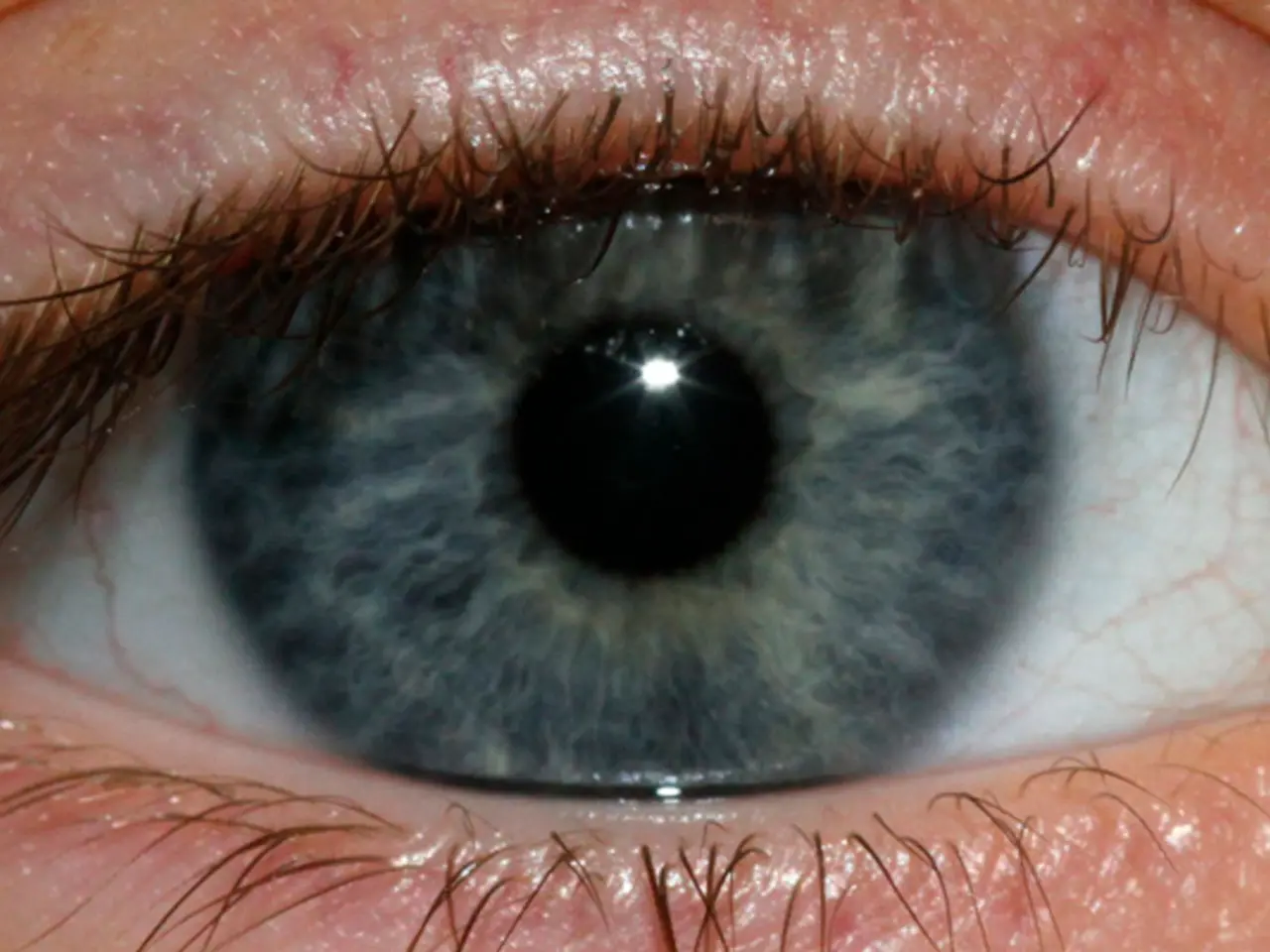Visual acuity and eye health: a focus on our peepers
In the fascinating world of our senses, vision stands out as one of the most crucial. But not everyone's vision is the same, and some people need a little help to see the world clearly.
The human eye, a marvel of design, works by allowing light to enter through the cornea and pupil, which is regulated by the iris. The lens then focuses this light onto the retina, a layer at the back of the eye containing photoreceptor cells known as rods and cones. These cells convert the light into electrical signals that are sent through the optic nerve to the brain, where they are interpreted as images [1][3][4].
However, vision issues can occur when the eye cannot properly focus light onto the retina, leading to blurred vision. Common defects include myopia, hypermetropia, and astigmatism [4].
Myopia, also known as near-sightedness or short-sightedness, is a condition where light focuses in front of the retina, making distant objects appear blurry. On the other hand, hypermetropia, or far-sightedness, causes light to focus behind the retina, making close objects appear blurry [4]. Astigmatism is an eye condition that causes objects to appear blurry both close up and far away, due to an unevenly shaped cornea [2].
These vision issues can be detected through eye exams, which involve several types of tests such as the acuity test. These exams measure refractive errors by assessing how light focuses on the retina and by testing acuity and eye health [4].
Corrective measures for these issues include wearing glasses or contact lenses, which bend incoming light rays to correctly focus images on the retina, compensating for the specific refractive error. Surgery, like LASIK, can also be used to reshape the cornea and improve focus [2][4].
The Vision 20/20 Project, a collaborative effort between experts from Otago Polytechnic, Otago University's School of Medicine, and Tahuna Normal Intermediate School, is working to address visual impairment issues in education. This participatory science project aims to develop a peer-to-peer vision screening program, with the design supporting students to conduct peer-to-peer vision testing [5].
The Vision 20/20 Project has been supported and funded by several organisations, and it is part of a broader government initiative called A Nation of Curious Minds - He Whenua Hihiri i te Mahara. This strategic plan, jointly led by the Ministry of Business, Innovation and Employment, the Ministry of Education, and the Office of the Prime Minister's Chief Science Advisor, emphasises the importance of scientific literacy and innovation in New Zealand [6].
Interestingly, about 80% of learning at school is dependent on vision, and reduced vision can cause disadvantages in literacy and numeracy, poor focus, perseverance, and class participation [7]. So, by addressing vision issues, we are not only enhancing the quality of life for individuals but also improving their educational opportunities.
In conclusion, vision is a vital sense that allows us to perceive the world around us. Understanding common eye conditions and the importance of vision screening is essential to ensuring everyone can see the world as clearly as possible.
- The field of medical-conditions encompasses a wide range of eye health issues, such as myopia, hypermetropia, and astigmatism, which can affect an individual's ability to see clearly.
- Health-and-wellness, including fitness-and-exercise and mental-health, are interconnected with eye-health. For instance, maintaining good nutrition and overall health can reduce the risks of developing certain eye conditions.
- The science of eye health plays a crucial role in solving real-world problems, as demonstrated by the Vision 20/20 Project, which is aimed at addressing visual impairment issues in education.
- Skin-care is not directly linked to vision, but overall health-and-wellness, which includes both eye-health and skin-care, contribute to a person's quality of life and ability to learn effectively.




